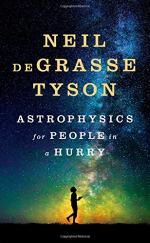|
This section contains 760 words (approx. 2 pages at 400 words per page) |

|
Summary
This chapter is dedicated to the most valuable tools in the astrophysicist’s arsenal, telescopes. Until relatively recently, the term light only referred to visible light. In 1800, this changed at the hands of William Herschel; while studying the relationship between sunlight, color, and heat, Herschel discovered “invisible light” below the red of the spectrum, or “infrared” light (150). Merely a year later, Johann Wilhelm Ritter continued this area of research, finding ultraviolet rays again outside of the visible spectrum. While these discoveries were paramount in modern understanding of the electromagnetic spectrum, telescopes designed to detect these invisible bands of light “wouldn’t be built for 130 years” (151).
All telescopes, though they vary in strength, detector technology, and size, share one commonality: “every bit of information a telescope delivers to the astrophysicist comes to Earth on a beam of light” (152). As Herschel and Ritter helped determine...
(read more from the Invisible Light Summary)
|
This section contains 760 words (approx. 2 pages at 400 words per page) |

|




